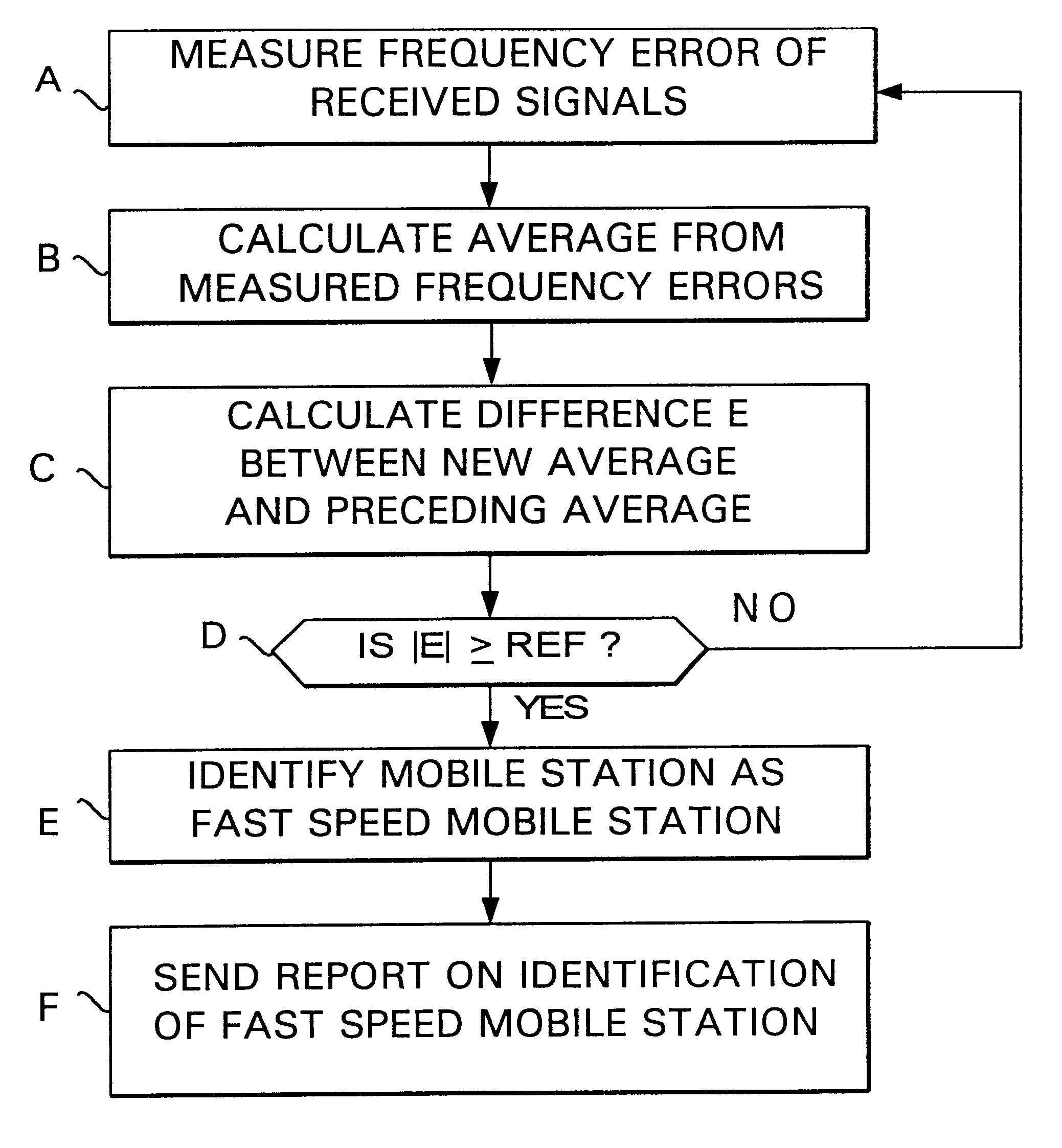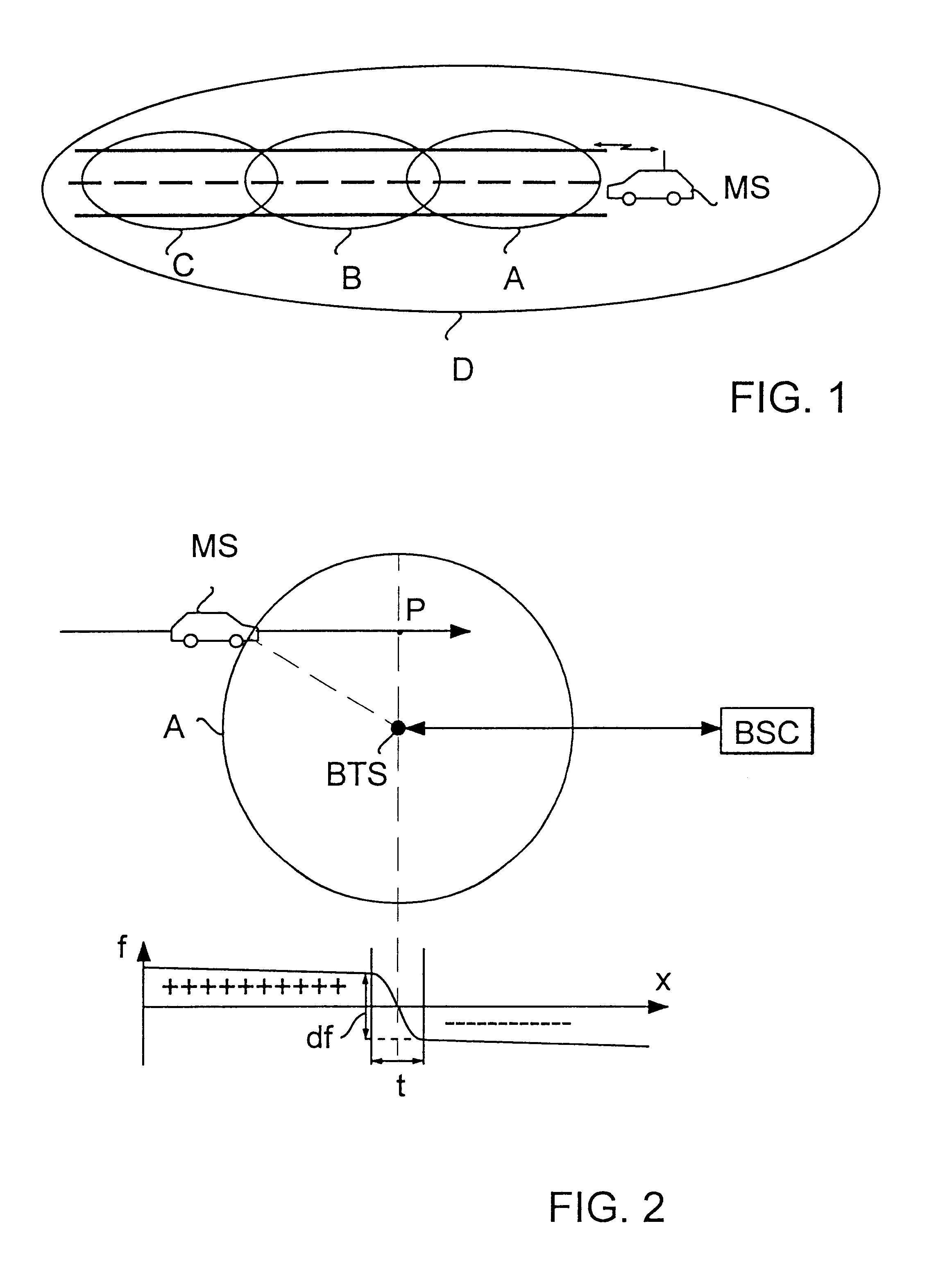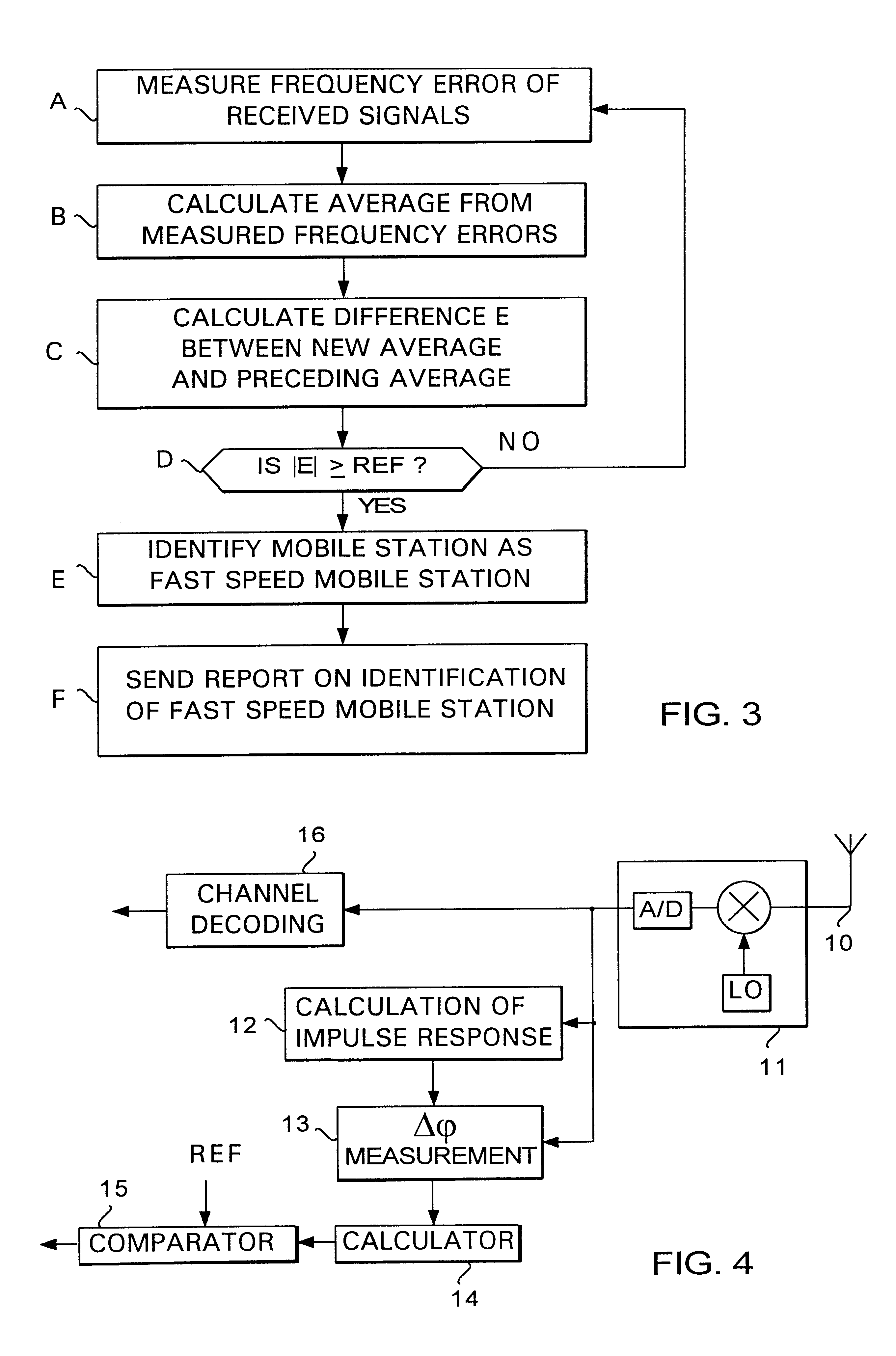Method for identifying a fast speed mobile station, and a base station
a mobile station and fast speed technology, applied in the field of fast speed mobile station identification and base station identification, can solve the problems of speed mobile station as fast speed mobile station may unnecessarily overload the larger radio cell, the quality of connection deteriorates, and the speed mobile station may not be reliably identified
- Summary
- Abstract
- Description
- Claims
- Application Information
AI Technical Summary
Benefits of technology
Problems solved by technology
Method used
Image
Examples
Embodiment Construction
FIG. 1 illustrates the motion of a mobile station in a cellular radio system. The part of a cellular radio system illustrated in FIG. 1 may be, for example, the GSM system (Groupe Special Mobile). Microcells A, B and C are arranged along a road and, in addition, the section of the road is served by a larger cell D.
When the mobile station MS in the car shown in FIG. 1 moves along the road, it is at first served by the base station of cell A. Thereafter a handover takes place to the base station of cell B and finally to the base station of cell C. If the mobile station is a fast speed mobile station (FSMS), these handovers take place at very short intervals, which loads the network management resources unnecessarily, and moreover, the quality of the connection deteriorates. In the case of FIG. 1, it would therefore be more advantageous to hand the mobile station MS over to the larger cell D, if it is identified as a fast speed mobile station.
FIG. 2 illustrates the frequency error dete...
PUM
 Login to View More
Login to View More Abstract
Description
Claims
Application Information
 Login to View More
Login to View More - R&D
- Intellectual Property
- Life Sciences
- Materials
- Tech Scout
- Unparalleled Data Quality
- Higher Quality Content
- 60% Fewer Hallucinations
Browse by: Latest US Patents, China's latest patents, Technical Efficacy Thesaurus, Application Domain, Technology Topic, Popular Technical Reports.
© 2025 PatSnap. All rights reserved.Legal|Privacy policy|Modern Slavery Act Transparency Statement|Sitemap|About US| Contact US: help@patsnap.com



